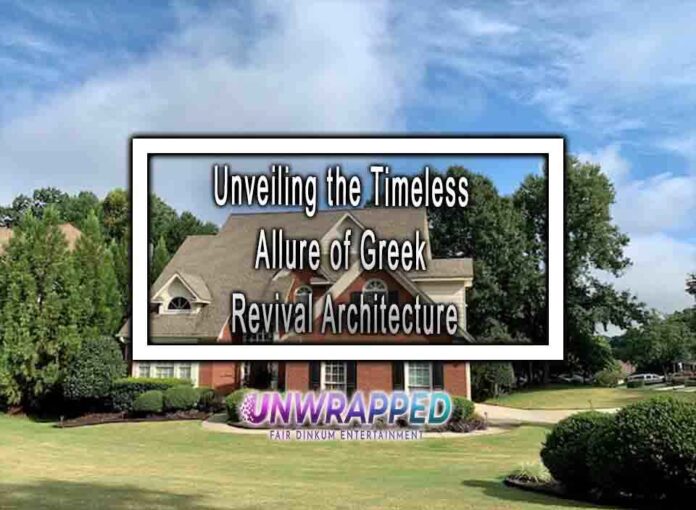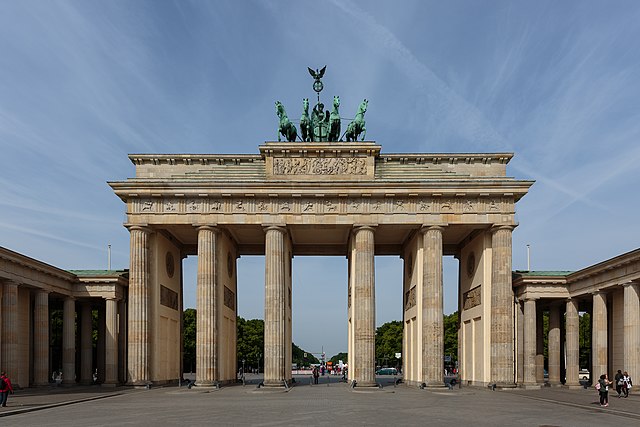Greek Revival architecture, popularized in the late 18th to mid-19th centuries, draws inspiration from the classical architecture of ancient Greece. This style reflects the ideals of ancient Greek design, emphasizing symmetry, order, and grandeur. The timeless allure of Greek Revival architecture is evident in its enduring popularity and the following key features:
Columns and Porticos:
- One of the most iconic features of Greek Revival architecture is the use of columns, especially the grand columns of ancient Greek temples. These columns are typically of the Doric, Ionic, or Corinthian orders. Greek Revival buildings often include porticos, which are covered entryways supported by columns.

- One of the most iconic features of Greek Revival architecture is the use of columns, especially the grand columns of ancient Greek temples. These columns are typically of the Doric, Ionic, or Corinthian orders. Greek Revival buildings often include porticos, which are covered entryways supported by columns.
Symmetry and Balance:
- Greek Revival structures are known for their strict adherence to symmetry and balance. The placement of columns, windows, and doors is carefully arranged to create a sense of order and proportion. This symmetry contributes to the classical elegance of the architecture.
Pediments and Cornices:
- Pediments, the triangular gables above porticos or doors, are common in Greek Revival architecture. These pediments often feature classical ornamentation or sculpture. Elaborate cornices with dentil molding, another classical detail, are often present along the rooflines.
Roof Styles:
- Greek Revival buildings typically have pitched roofs with gables. The roofs may be simple and unadorned, allowing the focus to remain on the classical elements of the facade. Some buildings may have low-pitched hip roofs, particularly in later adaptations of the style.
Symmetrical Window Placement:
- Windows in Greek Revival buildings are often evenly spaced and aligned to maintain symmetry. The window openings may feature decorative moldings, and some designs incorporate triangular or arched pediments above windows to echo the classical motifs.
Stucco or Stone Exterior:
- Greek Revival buildings are often constructed with stucco or stone exteriors. The use of durable materials adds to the classical and enduring quality of the architecture. White or light-colored exteriors are common, reminiscent of the ancient Greek marble structures.
Temple-Like Facades:
- Greek Revival architecture often creates a sense of grandeur by emulating the appearance of ancient Greek temples. The front facade, with its columns and pediments, may resemble the front of a classical temple, reinforcing the association with the ideals of ancient Greek architecture.
Classical Ornamentation:
- Classical ornamentation, such as friezes, metopes, and triglyphs, may be incorporated into the design. These details are inspired by the decorative elements found in ancient Greek temples and add a layer of sophistication to the architecture.
Entry Stairs:
- Some Greek Revival buildings feature entry stairs leading to a raised platform, echoing the elevated nature of ancient Greek temples. The stairs contribute to the sense of grandeur and provide a ceremonial entrance.
Continued Influence in Civic and Institutional Buildings:
- Greek Revival architecture has had a lasting impact on civic and institutional buildings, especially in the United States. Many government buildings, museums, and educational institutions showcase Greek Revival elements, emphasizing the association of classical architecture with democratic ideals.
Timeless Adaptability:
- Greek Revival architecture continues to inspire contemporary architects and homeowners. Its timeless adaptability is evident in modern interpretations that integrate classical features into new constructions, blending historical elegance with contemporary living.
In summary, the timeless allure of Greek Revival architecture lies in its classical elegance, emphasis on symmetry, and association with the grandeur of ancient Greek design. The enduring popularity of this architectural style is reflected in its influence on a wide range of buildings, from private residences to public institutions, and its ability to captivate with its harmonious and dignified aesthetic











